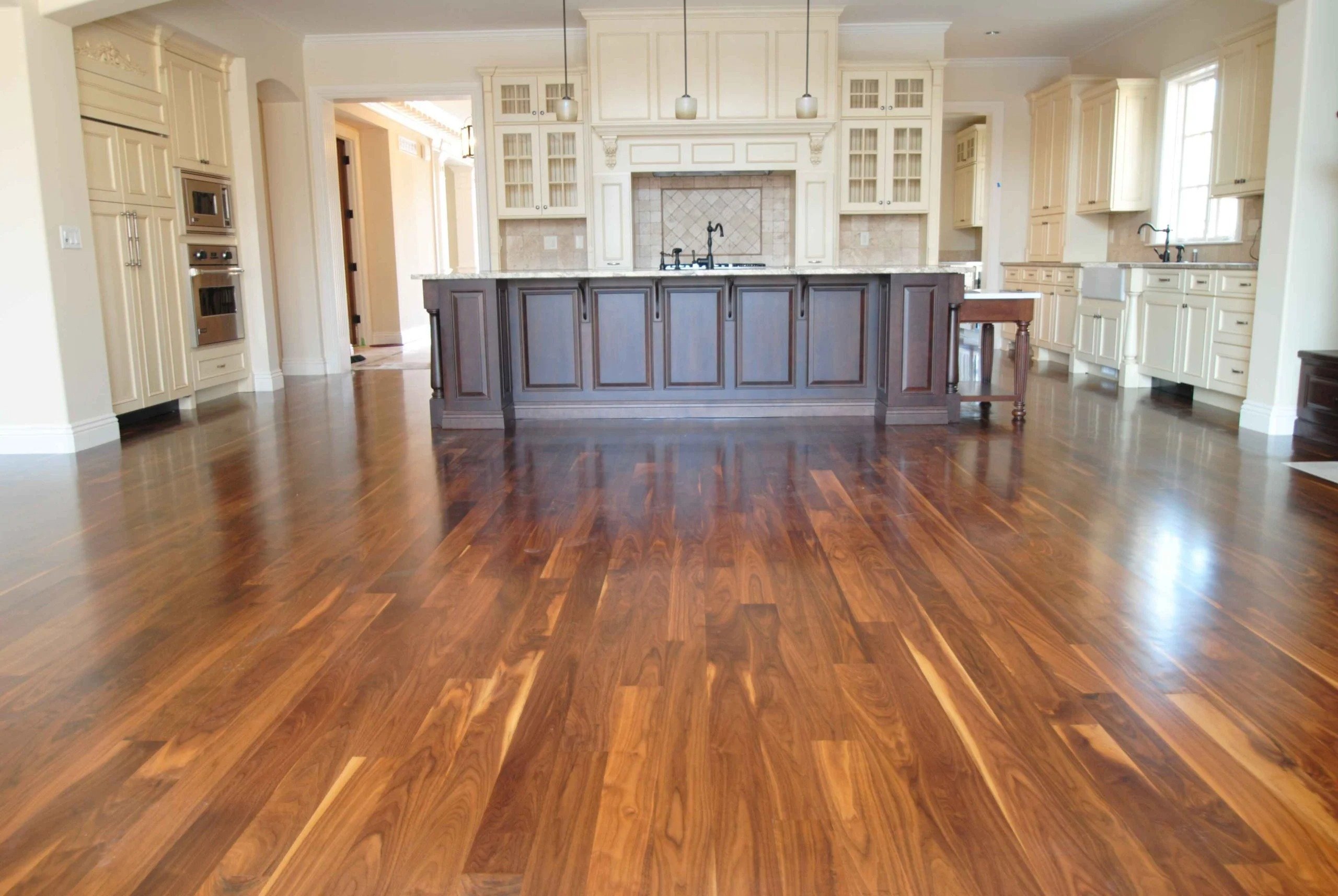Thinking about putting Walnut hardwood floors in your home? Good call — Walnut is one of those woods that just feels like luxury. It’s rich, it’s warm, and it brings real character into a space. But before you jump in, there are a few things worth knowing — not just about the look, but about how Walnut behaves once it’s under your feet.
This guide breaks it all down: what to expect, how to plan, and whether your home is ready to make Walnut work long-term.
Why Walnut Flooring Is So Popular Right Now
There’s a reason Walnut hardwood flooring has become a designer favorite — especially in high-end homes. It has this unmistakable chocolate-brown tone that deepens with age, a flowing grain that’s not too busy, and a softness underfoot that makes walking barefoot a real treat.
But looks aren’t everything. Walnut is softer than Oak or Hickory, so it needs the right setting and care. Understanding that balance early on is key to being happy with your choice for the long haul.
Know Your Wood: What Makes Walnut Unique?
Here’s a quick breakdown:
- Color: Ranges from light brown to dark espresso, often with purplish undertones.
- Grain: Smooth and flowing, less dramatic than Oak.
- Hardness: Walnut ranks around 1,010 on the Janka hardness scale — softer than Red Oak (1,290) or Hickory (1,820).
- Aging: Gets slightly lighter with exposure to sunlight over time.
So if you want flooring that’s bold, rich, and calming — Walnut delivers. Just don’t expect it to handle rough treatment without showing a little wear.
Is Your Home Ready for Walnut Floors?
Before installation, it’s smart to ask: is your space a good match?
- Subfloor Matters: Walnut planks need a stable, level base. Any dips or bumps will cause problems later.
- Humidity Control: Wood moves — especially softer species like Walnut. Keep humidity between 35–55% to prevent warping.
- Where You Install It: Best for low- to medium-traffic areas like bedrooms, living rooms, and home offices. Not ideal for bathrooms or mudrooms.
Tip: If you’ve got dogs, kids, or heavy foot traffic, you’ll want to think about rugs, furniture pads, and finish durability.
Solid vs. Engineered Walnut: What’s Right for You?
Solid Walnut is classic — a full plank of wood you can sand down multiple times. But it’s more prone to expansion and contraction with moisture.
Engineered Walnut is real Walnut on top, with a stable core underneath. It’s better for basements, radiant heating, or wide plank designs.
Quick comparison:
| Type | Pros | Best For |
|---|---|---|
| Solid Walnut | Long lifespan, refinishable many times | Dry climates, traditional installs |
| Engineered Walnut | More stable, great for wider boards | Basements, high-moisture areas |
What to Expect During Installation
A professional installer will:
- Acclimate the wood for a few days before laying it.
- Check moisture levels in subfloor and planks.
- Nail or glue down the boards depending on type and subfloor.
Also important — if you’re finishing the floor on-site, ask about stain options. Walnut looks amazing natural, but some prefer a custom tone. Either way, talk to your installer about how to protect it.
Maintenance Tips for Long-Lasting Beauty
Let’s be honest — Walnut is a bit of a diva. But with the right care, it stays stunning.
- Daily: Use a soft broom or vacuum (no beater bar).
- Weekly: Damp mop with a hardwood-safe cleaner.
- Prevention: Rugs in busy areas, pads under furniture, trim pet nails.
Even with its softer nature, Walnut holds up beautifully when protected. And the patina it develops over time? Gorgeous.
Need More Help Deciding?
Still on the fence? This might help 👇
👉 Walnut Hardwood Flooring: Is It Worth It? Pros, Cons, and Expert Advice Before You Buy — this deep dive covers everything from pros and cons to expert maintenance tips.
If you’re comparing Walnut to Oak or Hickory, that’s where you’ll find all the detail.
Final Take: Is Walnut Right for You?
If you want a floor that’s bold, elegant, and full of natural character — Walnut is a top contender. Just know what it needs. Don’t put it in the wrong room. Don’t skimp on the finish. And don’t skip the prep work.
Get those things right, and Walnut won’t just be a floor — it’ll be the soul of your home.


